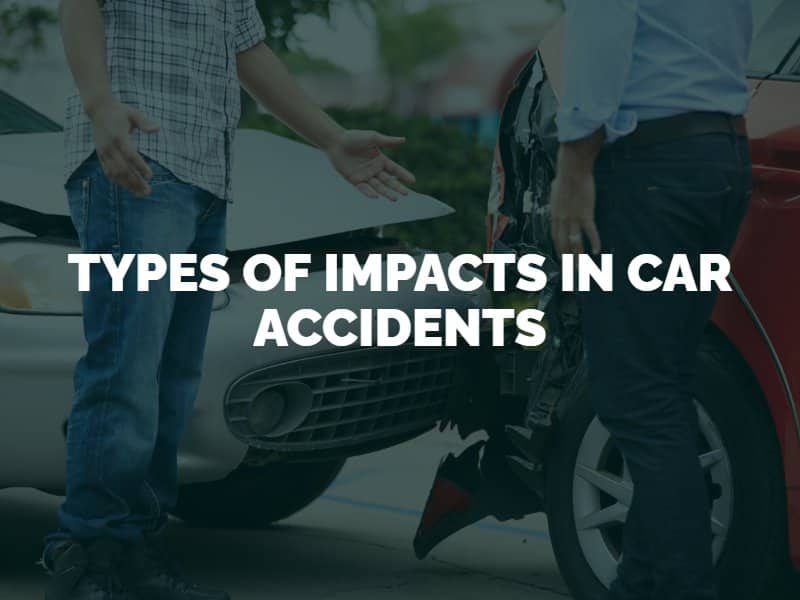Car crashes cause harm in a multitude of ways. Usually, the damage they cause involves some form of impact. In a single crash, many different types of impacts can occur. We believe you should be aware of every type of impact, especially if you are currently engaged in a personal injury claim.

An impact is defined as an instance where one object forcibly comes into contact with another. Car accidents involve a variety of impacts, each with different outcomes. Sometimes, a car crashing into another vehicle causes property damage. Though, at other times, the crash also causes a person’s body to impact structures within their vehicle. Beyond those initial two impacts, there are also the impacts that occur internally throughout the victims’ bodies.
In the previous section, we provided you with some insight into the different types of car accident impacts, but it should be helpful for you to have more detail about each one.
These are the different types of car accident impacts:
When the exterior of a vehicle collides with another object, a vehicle impact has occurred. This could involve two or more vehicles, a vehicle, and a fixed object, or even an impact with a pedestrian. When a vehicular impact occurs, the level of damage that follows will be decided by a number of factors, such as the weight of the vehicle, how fast it was moving, and how soon the driver was able to respond to the hazard they crashed into. Today, most passenger vehicles are built to absorb force from collisions, but this sometimes fails to keep passengers safe.
The next level of impact occurs when a person’s body collides with a structure within their vehicle. When a collision happens, passengers often fly forward and are thrust into their seat belts or another object inside of their vehicles. In some cases, they even get impacted by the other object that they crashed into. If there are loose objects within the vehicle, those may even become projectiles that cause significant damage to the vehicle’s passengers. For example, a glass bottle may be thrown toward a passenger when an accident occurs, resulting in a variety of wounds.
After the first two levels of impact occur, the inside of your body is affected. These internal impacts involve internal organs shifting due to the force that is distributed throughout your body. Most commonly, a passenger’s brain slides forward and strikes the inside of their skull. Other organs can fracture when they are under pressure, resulting in bleeding or other injuries that can be fatal.
Whether you only incurred damage to your vehicle or you had your organs damaged by an accident, you deserve to be fully compensated for your losses. Though, recovering compensation requires proving that the other party was at fault in the accident. To get help building your case, rely on the talented Denver car accident attorneys at Fang Law Firm.
To reach one of our attorneys, contact us.